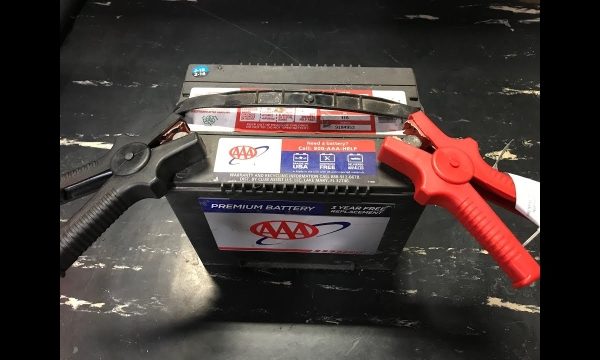Welcome to our comprehensive guide on handling two common car emergencies: jump-starting a car and dealing with lockouts. Whether you find yourself with a dead battery or locked out of your own vehicle, fret not, as we are here to equip you with pro tips to overcome these challenges like a seasoned pro.
Car jump starts can save the day when you least expect it. Picture this: you’re stranded in the middle of nowhere with a vehicle that won’t start. Frustration sets in, but fear not, for we will enlighten you on the ins and outs of safely jump-starting your car. A dead battery no longer needs to be a barrier to reaching your destination.
Lockouts, on the other hand, can be incredibly frustrating, especially when time is of the essence. Whether you accidentally locked your keys inside your vehicle or misplaced them altogether, panic may start to creep in. Fear not, as we will share expert tips for overcoming lockouts and gaining access to your car once again.
In this article, we will walk you through step-by-step instructions for car jump starts, offer practical tips for dealing with lockouts, and even touch on other roadside predicaments like flat tire changes. Additionally, we will delve into the importance of reliable towing services and introduce you to "Rick’s Emergency Roadside Assistance," your trusted partner for 24/7 towing and roadside services in Chicago.
So, without further ado, let’s dive into these essential car emergency procedures and equip ourselves with the knowledge and confidence needed to tackle unexpected road mishaps head-on.
Pro Tips for Car Jump Starts
The dreaded dead car battery can quickly turn a good day into a frustrating one. But fear not! With a few pro tips, you can be back on the road in no time. Here are some helpful pointers for successfully jump-starting your car.
First things first, ensure both vehicles are turned off and the jumper cables are easily accessible. Locate the positive and negative terminals on each battery – the positive usually has a plus sign while the negative has a minus sign. It’s crucial to connect the cables correctly to avoid any damage to the electrical system. Remember, red is positive and black is negative.
Next, connect one end of the positive cable to the positive terminal of the dead battery. Then, attach the other end of the positive cable to the positive terminal of the working battery. With the negative cable, connect one end to the negative terminal of the working battery. Here comes the crucial step: instead of attaching the other end of the negative cable to the negative terminal of the dead battery, connect it to an unpainted metal surface on the engine block or frame of the stalled vehicle. This helps prevent sparks and potential explosions.
Once all the connections are secure, start the engine of the working vehicle and let it run for a few minutes. Give the dead battery a chance to recharge. Now, attempt to start your own vehicle. If it starts up, great job! Leave it running for a while to ensure the battery is fully charged before hitting the road again. If it still doesn’t start, you might need to seek professional help or consider getting a new battery.
Remember, safety is paramount during jump-starts. If you’re unsure about any step, it’s better to consult a professional than risk causing further damage. With these pro tips, you’ll be equipped to handle those frustrating dead battery moments like a champ. Safe travels!
(Note: The information provided in this section is for informational purposes only and does not constitute professional advice. Always consult your vehicle’s manual or seek professional assistance for specific jump-start procedures.)
Pro Tips for Car Lockouts
Stay Calm and Assess the Situation
When faced with a car lockout situation, it’s important to stay calm and assess the situation before taking any action. Take a moment to check if all the doors of the car are really locked and if there’s any other possible way to gain access. Sometimes, a simple mistake like leaving a window open or using a spare key might save you from the trouble of having to unlock the car.Contact a Professional Locksmith
If you’re unable to find a quick solution on your own, it’s always best to contact a professional locksmith. These experts have the necessary tools and expertise to help you unlock your car without causing any damage. Make sure to choose a reliable locksmith service provider to avoid any potential scams or unnecessary expenses.Consider Preventive Measures
To minimize the chances of getting locked out of your car in the future, it’s a good idea to take some preventive measures. One easy step is to always carry a spare key with you or keep one with a trusted friend or family member. Additionally, you can invest in keyless entry systems or remote car starters that offer convenience and reduce the risk of lockouts.
Remember, a car lockout can happen to anyone, so it’s important to be prepared and know what to do. Stay calm, reach out to a professional locksmith if needed, and take preventative measures to avoid future lockouts. By staying proactive, you can save yourself from the stress and inconvenience of being locked out of your vehicle.
Best Practices for Flat Tire Changes
Safety First: Before attempting to change a flat tire, ensure that you are in a safe location away from traffic. Park your vehicle on level ground and engage the parking brake. Turn on your hazard lights to alert other drivers of your presence. If possible, place reflective warning triangles or flares to further enhance visibility.
Gather the Tools: To effectively change a flat tire, you’ll need a few essential tools. Firstly, locate your vehicle’s spare tire, jack, and lug wrench. These are usually found in the trunk or under the vehicle. Ensure that your lug wrench matches the size of your wheel nuts. It’s also helpful to have a flashlight and gloves handy.
Step-by-Step Process: Begin by loosening the wheel nuts, but do not remove them just yet. This is easier when the weight of the vehicle is still on the tire. Once loosened, locate the designated jacking point underneath your vehicle and carefully raise it with the jack. Once the tire is off the ground, fully remove the wheel nuts and take off the flat tire. Place the spare tire onto the wheel hub and hand-tighten the wheel nuts. Lower the vehicle back to the ground and then use the lug wrench to securely tighten the nuts in a star pattern.
Professional Car Locksmith
Remember, if you are unsure or uncomfortable about changing a flat tire, it’s best to contact a professional roadside assistance service like "Rick’s Emergency Roadside Assistance" for prompt and reliable help.




